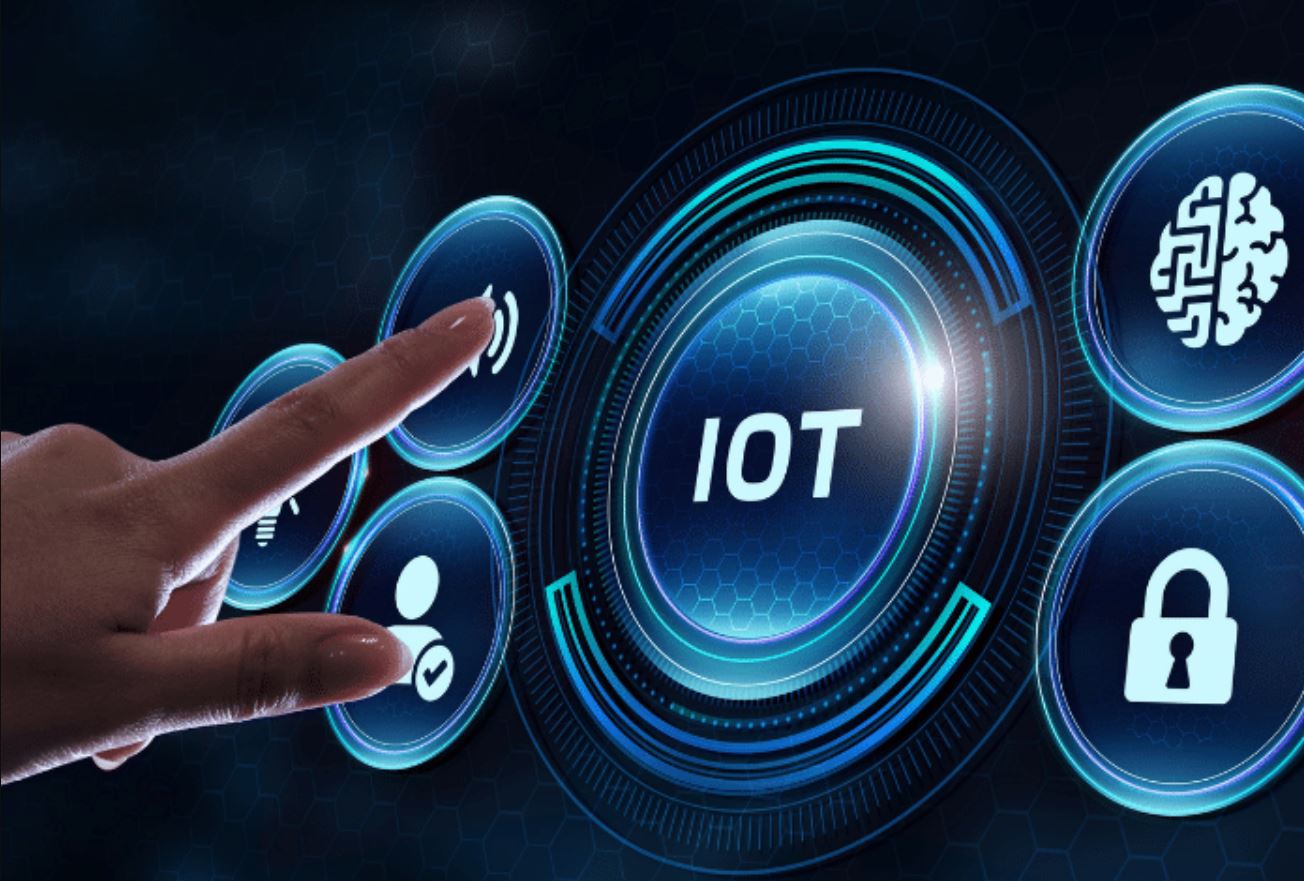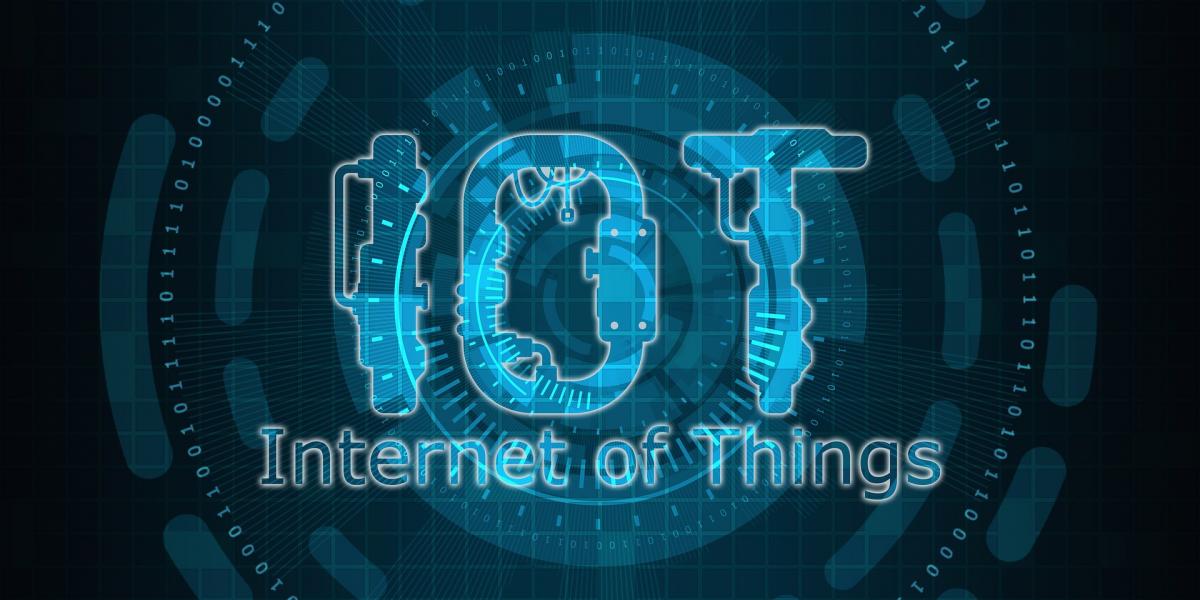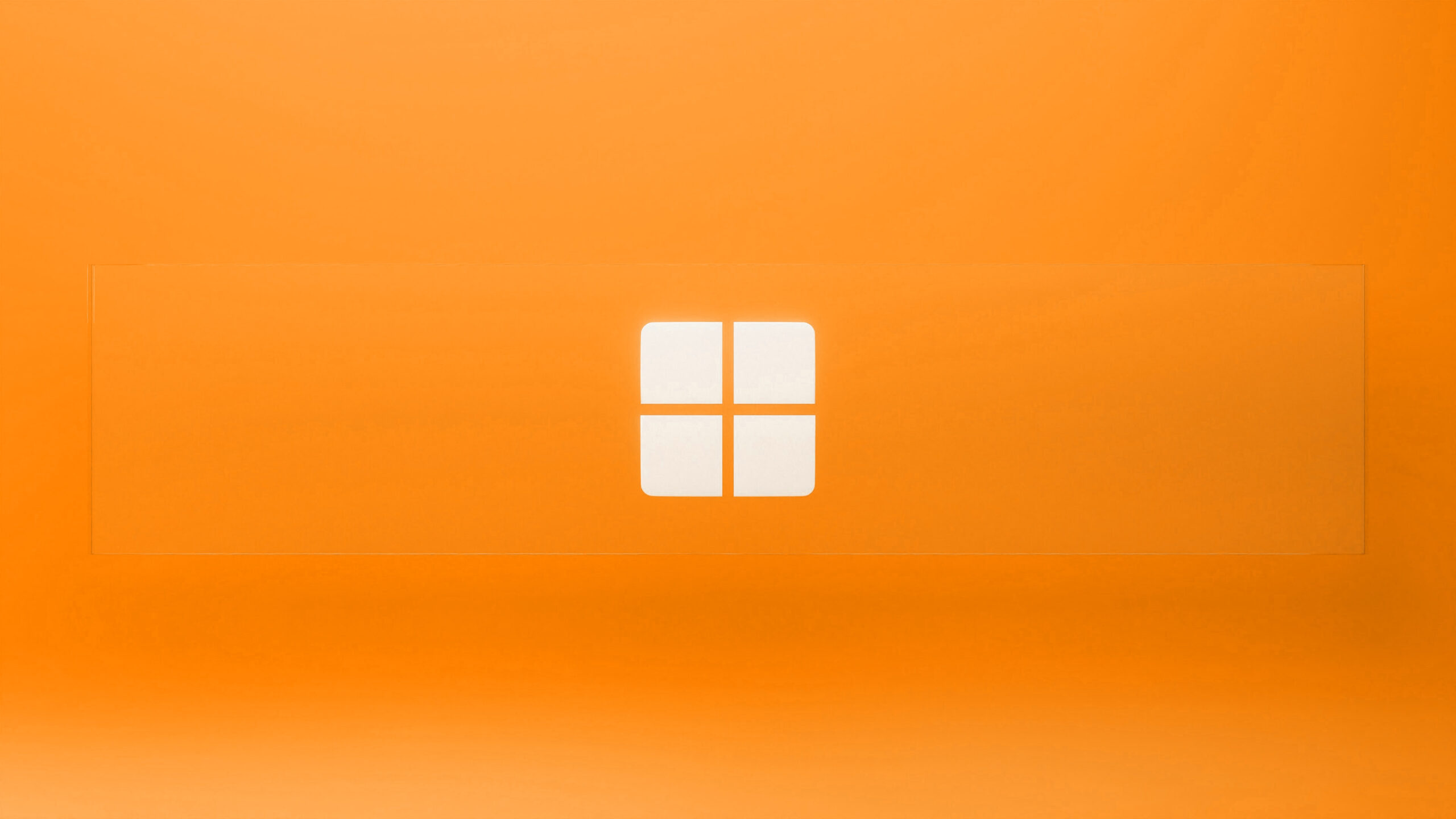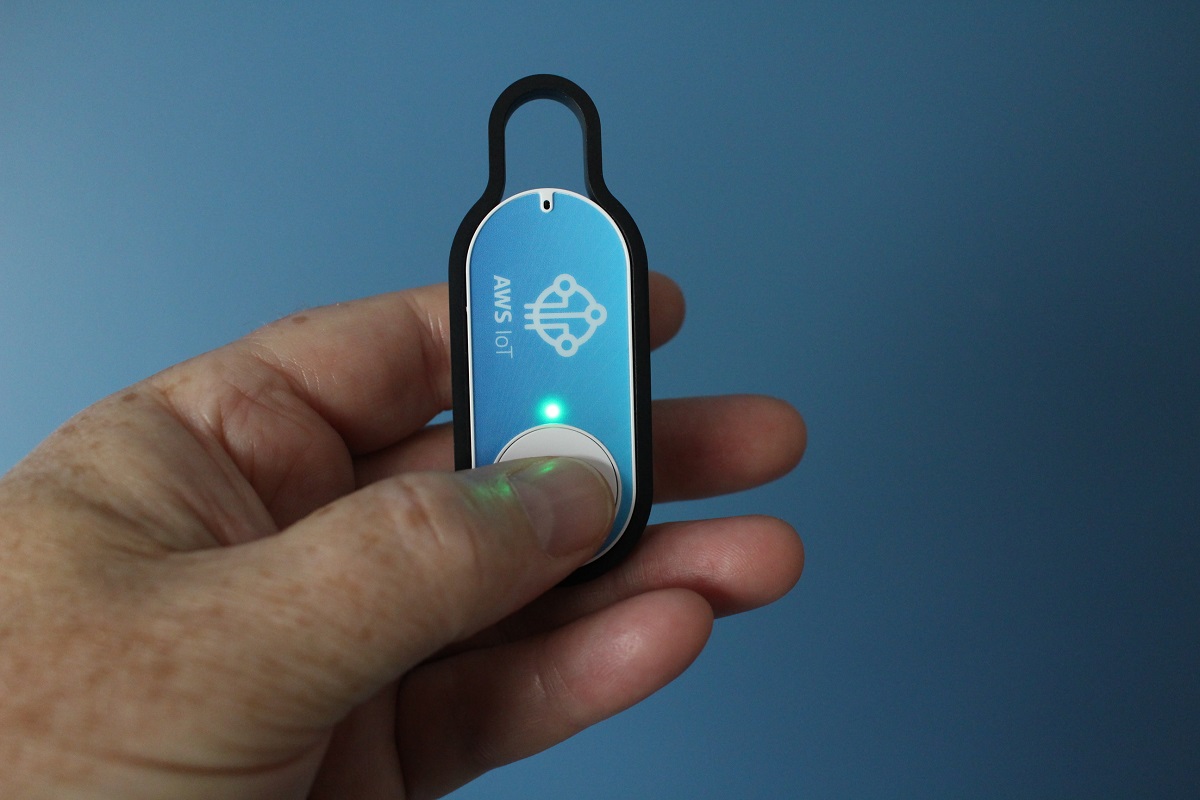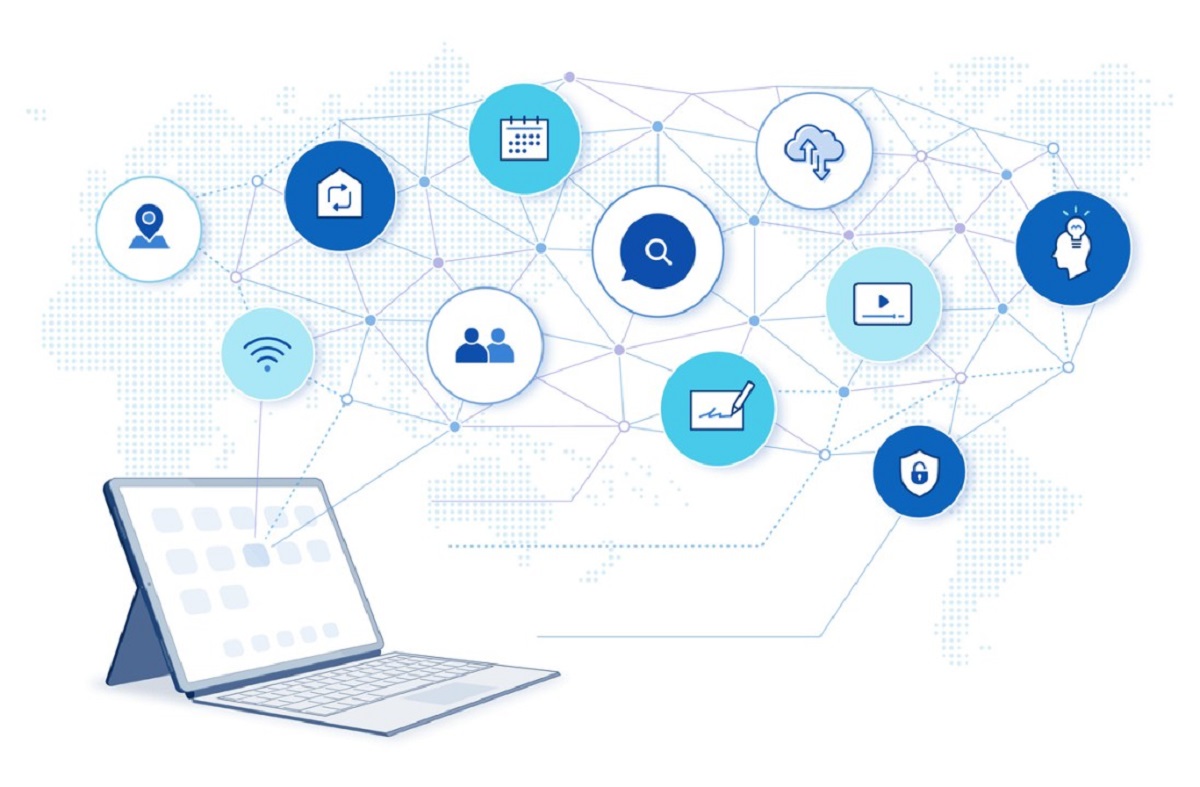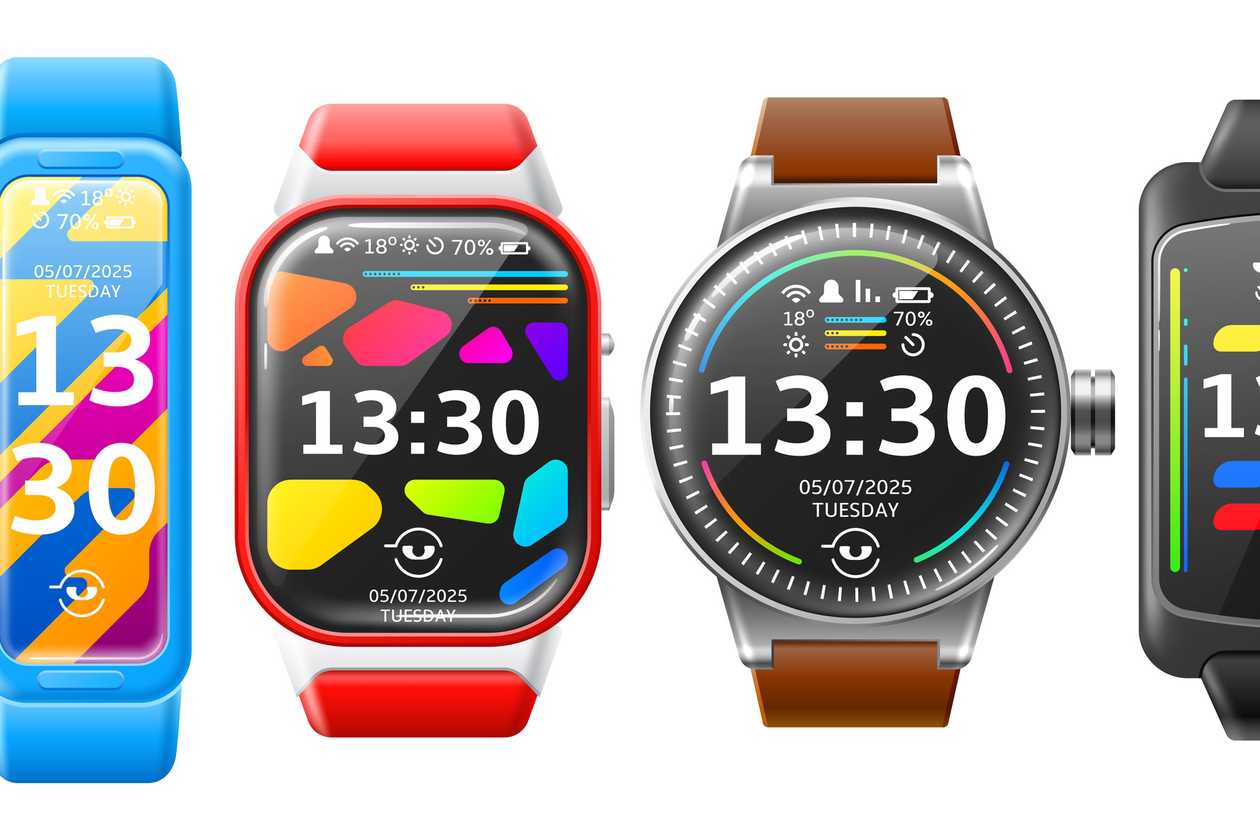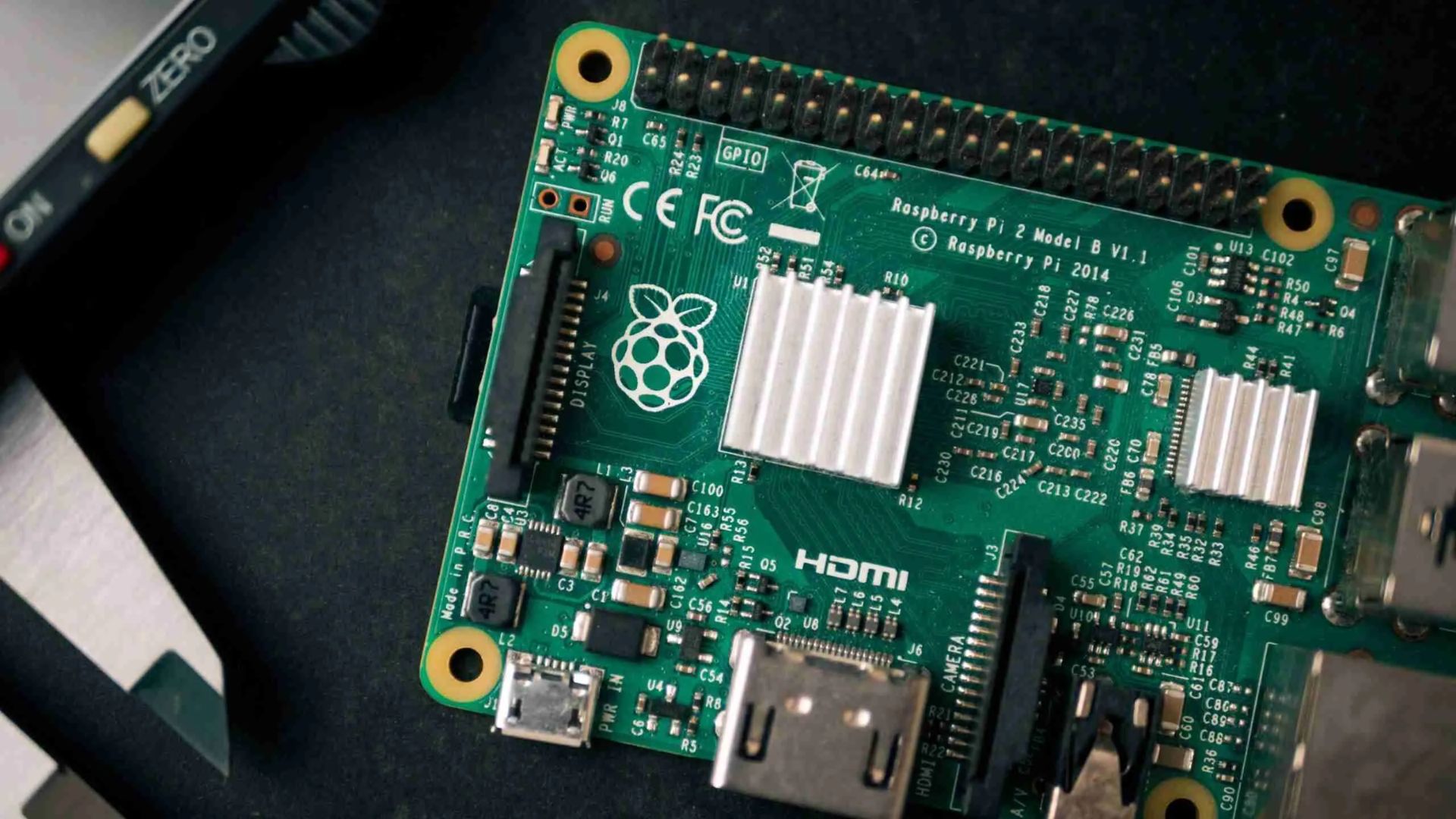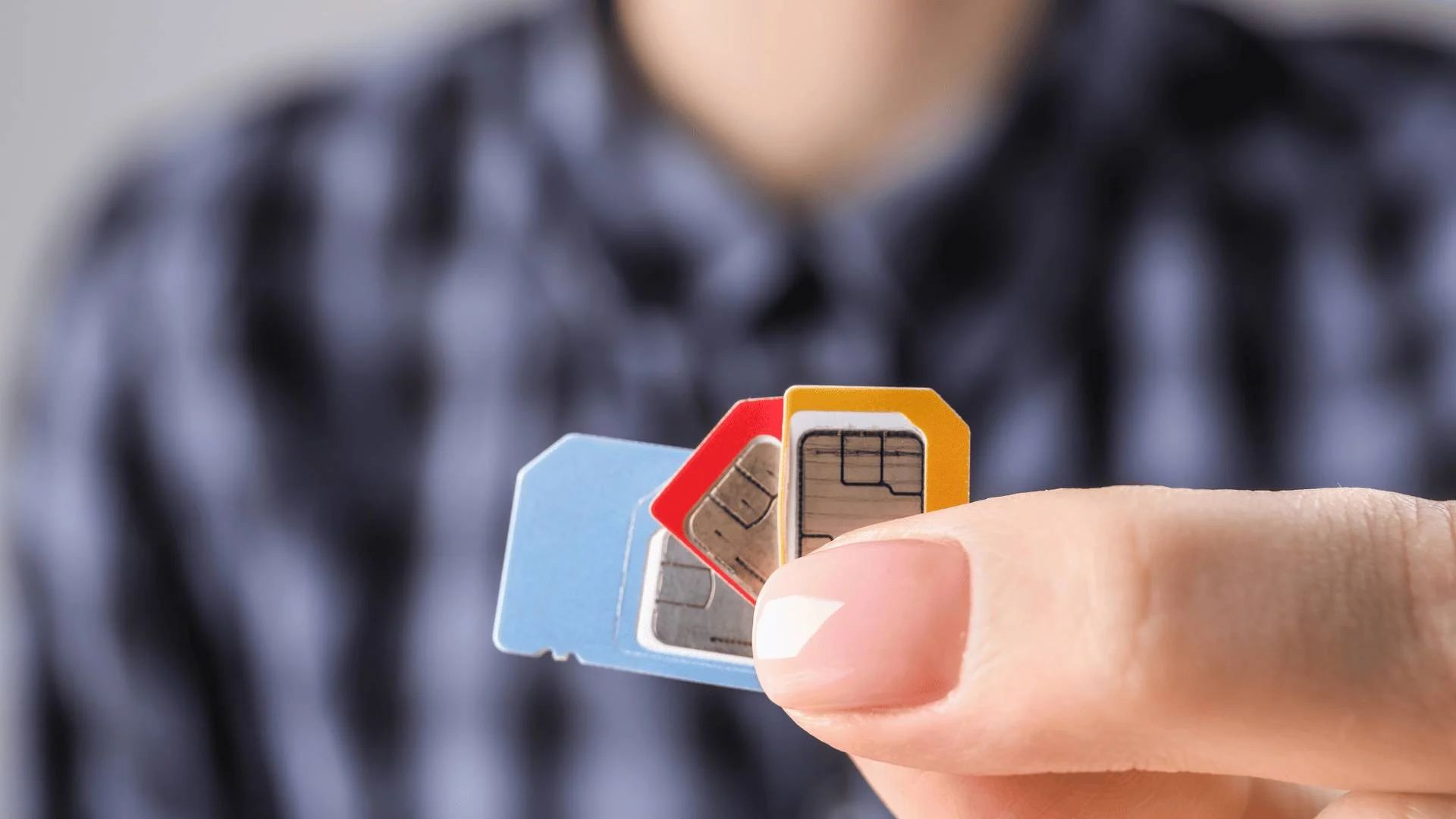Introduction
Welcome to the world of the Internet of Things (IoT). The IoT is a revolutionary concept that has changed the way we interact with technology, as it enables everyday objects to connect and communicate with each other via the internet. From smart homes and wearable devices to industrial machinery and transportation systems, IoT has made its presence felt in almost every aspect of our lives.
The IoT can be defined as a network of interconnected physical devices, vehicles, buildings, and other objects embedded with sensors, software, and network connectivity, which allows them to collect and exchange data. These devices can range from smartphones and tablets to thermostats, refrigerators, and even vehicles.
The concept of IoT is not new. In fact, it can be traced back to as early as the 1980s when computer scientist John Romkey developed the first IoT device, a toaster that could be controlled over the internet. However, it was not until recent years that IoT gained widespread attention and became a major driving force in the tech industry.
The connectivity aspect of IoT is what sets it apart from traditional devices. Through the integration of sensors and connectivity technologies such as Wi-Fi, Bluetooth, and cellular networks, devices can transmit and receive data, allowing for remote control, monitoring, and automation.
The applications of IoT are vast and diverse. In the consumer space, IoT has revolutionized how we interact with our homes. With smart home devices, we can control the lighting, temperature, security systems, and even kitchen appliances with a simple voice command or a tap on our smartphones.
In the industrial sector, IoT has brought about significant advancements in areas such as manufacturing, logistics, and maintenance. Smart factories use IoT technologies to optimize processes, improve efficiency, and reduce downtime. IoT-enabled sensors and analytics help companies better track and manage their inventory, ensuring timely and accurate deliveries.
One of the key benefits of IoT is the amount of data it generates. The massive volume of data collected from smart devices can be analyzed and used to gain valuable insights, improve decision-making, and enhance experiences. For example, retailers can leverage IoT data to personalize shopping experiences and offer targeted promotions based on customers’ preferences and behavior.
However, with its immense potential, IoT also presents significant challenges and concerns. Security and privacy are major issues, as the interconnected nature of IoT devices creates vulnerabilities that can be exploited by malicious actors. Moreover, the sheer scale of data generated by IoT devices raises questions about data storage, management, and ownership.
Despite these challenges, the future of IoT looks promising. With advancements in technology, such as 5G networks and edge computing, we can expect even more seamless connectivity and real-time data processing. The potential applications of IoT are limitless, and as more industries embrace its benefits, we will witness a world where everything is connected and intelligent.
Definition of IoT
The Internet of Things (IoT) refers to a network of interconnected physical objects, devices, vehicles, buildings, and other items that are embedded with sensors, software, and network connectivity, enabling them to collect and exchange data. These objects, also known as “things,” can range from everyday household items like refrigerators and thermostats to industrial machinery, vehicles, and wearable devices.
At its core, IoT is about creating a seamless connection between the physical and digital worlds. Through the integration of sensors and other technologies, objects can gather real-time data about their environment and communicate this data to other devices, applications, and users.
A key feature of IoT is the ability of the connected devices to interact with each other autonomously, without human intervention. This means that devices can make decisions and perform actions based on the data they collect, creating a more efficient and intelligent ecosystem.
The connectivity aspect of IoT plays a crucial role in enabling these interactions. Devices are connected through various communication technologies, such as Wi-Fi, Bluetooth, NFC (Near Field Communication), and cellular networks. This connectivity allows devices to communicate with each other and with the internet, forming a vast network of interconnected objects.
IoT devices are equipped with sensors that can detect and measure various parameters, including temperature, humidity, motion, light, and more. These sensors provide real-time data, which can be used to monitor and control the environment in which the devices are deployed. For example, a smart home thermostat can use temperature and humidity sensors to adjust the indoor climate automatically.
In addition to sensors, IoT devices often include actuators, which are components that enable them to perform physical actions. These actions can be triggered by data received from other devices or through predefined rules and algorithms. For example, an IoT-enabled irrigation system can automatically turn on sprinklers based on soil moisture levels detected by sensors.
Overall, IoT is transforming the way we perceive and interact with technology. It has the potential to revolutionize industries, improve efficiency, enhance experiences, and create new opportunities for innovation. However, as this interconnected ecosystem expands, it is essential to address the challenges related to security, privacy, and data management to ensure the safe and responsible adoption of IoT technologies.
History of IoT
The history of the Internet of Things (IoT) can be traced back to the early 1980s when the concept of connecting everyday objects to the internet started to take shape. The idea of a network of interconnected devices was first proposed by technology pioneers who envisioned a future where objects could communicate and collaborate.
One of the earliest examples of IoT can be attributed to computer scientist John Romkey, who in 1990 developed a toaster that could be controlled over the internet. This groundbreaking innovation demonstrated the potential for everyday objects to become intelligent and connected.
As technology continued to advance, the IoT landscape began to evolve. In 1999, Kevin Ashton, a British entrepreneur, coined the term “Internet of Things” during his work at Procter & Gamble. Ashton envisioned a world where objects could be identified and tracked through a network of sensors, enabling more efficient inventory management and supply chain automation.
However, it was not until the early 2000s that the foundation for IoT as we know it today started to take shape. The development of wireless communication protocols, such as Wi-Fi and Bluetooth, played a significant role in enabling the connectivity of devices. With the rise of smartphones and the proliferation of internet access, the infrastructure needed to support a connected ecosystem became more readily available.
The advent of machine-to-machine (M2M) communication further paved the way for IoT. M2M technology allowed devices to communicate directly with each other without human intervention, opening up new possibilities for automation and remote control. Industries such as healthcare, agriculture, logistics, and manufacturing began to explore the potential of IoT in streamlining processes and improving efficiency.
In recent years, IoT has gained widespread attention and adoption due to several factors. The decreasing cost of sensors and connectivity technologies, coupled with the exponential growth of data storage and processing capabilities, has made IoT more accessible for businesses and consumers alike.
The emergence of cloud computing has also been instrumental in the proliferation of IoT. Cloud platforms provide the scalability, storage, and computational power required to handle the massive amounts of data generated by IoT devices. This enables real-time analytics, predictive maintenance, and other advanced applications that leverage the power of data-driven insights.
Today, IoT has become an integral part of many industries and sectors. From smart homes and wearable devices to industrial automation and smart cities, IoT-enabled solutions are transforming the way we live and work. The future of IoT looks promising, with advancements in technologies like 5G, artificial intelligence, and edge computing further fueling its growth and potential.
Describing the Connectivity of IoT
The power and functionality of the Internet of Things (IoT) lies in its ability to connect and communicate with devices, enabling the seamless exchange of data and information. The connectivity of IoT is what makes it possible for objects and systems to interact, collaborate, and make intelligent decisions. In this section, we will delve into the various aspects of connectivity that underpin the functioning of the IoT ecosystem.
At the heart of IoT connectivity are the communication protocols and technologies that enable devices to connect and exchange data. Different devices use different communication protocols depending on their purpose, requirements, and the infrastructure available. Some common protocols used in IoT include Wi-Fi, Bluetooth, Zigbee, Z-Wave, and cellular networks like 3G, 4G, and 5G. These protocols allow devices to connect locally or over long distances, offering a range of options based on the specific needs of the IoT application.
IoT devices typically rely on wireless connectivity to establish communication. Wi-Fi is commonly used for local area connections within homes, offices, or other confined spaces. Bluetooth is another popular option for short-range connections between devices, such as smartphones, wearables, and smart home devices. Zigbee and Z-Wave, on the other hand, are designed for low-power, low-data-rate communications, making them suitable for IoT devices that require long battery life and operate in a mesh network.
For IoT deployments that require broader coverage and mobility, cellular networks play a crucial role. With the widespread availability of 3G, 4G, and the upcoming 5G networks, IoT devices can connect to the internet and transmit data from virtually anywhere. Cellular connectivity is particularly important for applications like fleet management, asset tracking, and remote monitoring, where devices need to communicate over long distances and in diverse environments.
An integral element of IoT connectivity is the use of IP (Internet Protocol) address, which facilitates the identification and communication between devices on the internet. By assigning unique IP addresses to each IoT device, they can send and receive data across networks, enabling seamless communication and interoperability. IPv6, the latest version of the IP protocol, provides a virtually unlimited number of addresses, ensuring the scalability needed to accommodate the growing number of IoT devices.
Another aspect of IoT connectivity is the concept of edge computing. Edge computing refers to the processing and analysis of data at or near the source, rather than sending it to the cloud or a centralized server. This approach reduces latency, minimizes the need for expensive bandwidth, and enhances privacy and security. Edge computing is especially valuable in time-sensitive applications, such as autonomous vehicles or real-time monitoring, where quick decision-making is crucial.
The connectivity of IoT also extends to cloud platforms, where data generated by IoT devices is collected, stored, analyzed, and managed. Cloud platforms offer the scalability and computational power required to handle the massive volumes of data generated by IoT devices. They enable real-time analytics, machine learning, and other advanced applications that leverage the data insights to drive business value and improve operational efficiency.
In summary, the connectivity of IoT is the backbone that enables devices, systems, and applications to seamlessly interact and share information. It encompasses different communication protocols, wireless technologies, IP addressing, edge computing, and cloud platforms. By leveraging the power of connectivity, IoT solutions can revolutionize industries, enhance experiences, and pave the way for a more interconnected and intelligent world.
Applications of IoT
The Internet of Things (IoT) has transformed the way we live and has revolutionized various industries by enabling the seamless connection and communication between devices. The applications of IoT are vast and diverse, ranging from smart homes and wearable devices to industrial automation and healthcare. In this section, we will explore some of the key areas where IoT is making a significant impact.
One of the most common applications of IoT is in the realm of smart homes. IoT-enabled devices such as thermostats, lighting systems, security cameras, and appliances can be interconnected and controlled remotely, providing convenience, energy efficiency, and enhanced security. Users can operate their devices through smartphone apps or voice commands, creating a personalized and interconnected environment.
In the healthcare sector, IoT plays a crucial role in improving patient care and monitoring. Wearable devices equipped with sensors can track vital signs, such as heart rate, blood pressure, and glucose levels, allowing for real-time health monitoring. IoT solutions also enable remote patient monitoring, allowing healthcare providers to monitor patients’ conditions and respond quickly to any changes or emergencies.
IoT is also transforming the way we manage our cities, creating smart cities that are more efficient, sustainable, and livable. Smart city initiatives utilize IoT technologies to monitor and manage critical infrastructure such as transportation systems, energy grids, waste management, and public safety. For example, sensors and connected devices can optimize traffic flow, reduce energy consumption, and enhance public safety by detecting and responding to emergencies or potential threats.
In the industrial sector, IoT plays a significant role in streamlining processes and improving efficiency. Industrial IoT, also known as Industry 4.0, leverages connected devices and sensors to enhance automation, monitoring, and predictive maintenance. IoT solutions enable real-time data collection, analysis, and optimization of manufacturing processes, leading to reduced downtime, improved productivity, and cost savings.
IoT is also revolutionizing the transportation and logistics industry. Through IoT-enabled tracking devices and sensors, businesses can monitor and optimize their supply chains, ensuring timely deliveries, reducing theft or loss, and improving overall efficiency. Connected vehicles, such as smart cars and fleet management systems, allow for real-time monitoring of vehicle performance, driver behavior, and safety, leading to improved fuel efficiency and safer transportation.
Another notable application of IoT is in agriculture, often referred to as smart farming. IoT solutions in agriculture can help optimize irrigation systems, monitor soil conditions, and track crop health. Sensors and connected devices provide real-time data on environmental parameters, enabling farmers to make informed decisions and optimize resource usage, leading to increased crop yield and reduced environmental impact.
The applications of IoT extend beyond these examples, permeating almost every aspect of our lives. From wearable fitness devices and smart appliances to connected retail and entertainment experiences, IoT has the potential to enhance convenience, efficiency, and overall quality of life.
As IoT adoption continues to grow, we can expect even more innovative and impactful applications to emerge, creating a more connected and intelligent world.
Benefits and Advantages of IoT
The Internet of Things (IoT) offers a multitude of benefits and advantages that have the potential to revolutionize industries and improve our daily lives. From enhancing productivity and efficiency to providing new opportunities for innovation, IoT brings numerous advantages to the table. In this section, we will explore some of the key benefits of IoT.
One of the primary benefits of IoT is the wealth of data it generates. IoT devices equipped with sensors collect real-time data on various parameters such as temperature, humidity, location, and more. This data can then be analyzed to gain valuable insights and inform decision-making. From predicting maintenance needs to optimizing processes, IoT data helps businesses make data-driven decisions for improved efficiency and enhanced performance.
Improved automation and efficiency are also major advantages of IoT. By connecting devices and systems, IoT enables seamless communication and coordination, reducing the need for manual intervention. For example, in a manufacturing setting, IoT can facilitate the automation of processes, leading to increased productivity, reduced errors, and cost savings.
IoT has the potential to enhance safety and security across various domains. For instance, IoT-enabled surveillance systems can monitor and detect unusual activities or unauthorized access, enhancing the safety of homes, offices, and public spaces. In healthcare, IoT devices can track vital signs and alert healthcare providers in case of emergencies, improving patient safety.
In the energy sector, IoT can drive significant energy savings and sustainability. By connecting devices and systems, energy consumption can be carefully monitored and optimized. Smart buildings equipped with IoT devices can adjust heating, cooling, and lighting based on occupancy or external conditions, ensuring energy efficiency and reducing carbon footprint.
IoT also opens up new opportunities for innovation and business models. With connected devices, businesses can offer new and personalized experiences to customers. For instance, retailers can leverage IoT data to provide personalized recommendations and targeted advertisements based on customer preferences. Similarly, IoT enables new business models such as vehicle-sharing services and subscription-based services.
Another advantage of IoT is improved asset management and tracking. IoT devices embedded in assets, equipment, or vehicles allow for real-time tracking and monitoring. This enables better asset utilization, reduced downtime, and improved maintenance planning. Businesses can optimize their supply chains, track shipments, and ensure the timely delivery of goods.
IoT also empowers individuals to have more control over their lives and environments. From monitoring energy usage, controlling home appliances, to tracking fitness goals, IoT devices provide individuals with actionable insights and the ability to make informed decisions. This leads to an improved quality of life and increased autonomy.
Furthermore, IoT has the potential to improve customer experiences. By collecting and analyzing data from customer interactions, businesses can personalize their offerings, anticipate customer needs, and provide more relevant and tailored experiences. This not only improves customer satisfaction but also fosters customer loyalty.
In summary, the benefits and advantages of IoT are vast. From data-driven decision-making and improved efficiency to enhanced safety and innovation, IoT has the potential to transform industries and improve our lives in numerous ways. As the IoT ecosystem continues to expand, we can expect even more benefits and advancements that will shape the future of technology and connectivity.
Challenges and Concerns in IoT Implementation
While the Internet of Things (IoT) offers immense potential and benefits, its implementation is not without challenges and concerns. As the IoT ecosystem continues to grow, it is important to address these issues to ensure the responsible and secure deployment of IoT technologies. In this section, we will discuss some of the key challenges and concerns in IoT implementation.
One of the major challenges in IoT implementation is security. With a vast number of interconnected devices, the attack surface for potential threats and vulnerabilities significantly expands. Unauthorized access to IoT devices can result in data breaches, privacy violations, and even physical harm. It is crucial to implement robust security measures such as encryption, authentication, and data integrity to protect IoT devices and the data they generate.
Privacy is another significant concern in IoT. Connected devices collect vast amounts of data about individuals, their behaviors, and their environments. This data can be sensitive and personal, raising concerns about how it is stored, shared, and used. Proper data handling practices, user opt-in consent mechanisms, and adherence to data protection laws and regulations are essential to ensure privacy in IoT implementations.
IoT devices often have limited computing resources and lack built-in security capabilities. This makes them susceptible to attacks and compromises. Manufacturers and developers must prioritize security in the design and development of IoT devices, ensuring that appropriate security measures are implemented throughout the lifecycle of the device.
Interoperability is another challenge in IoT implementation. With a multitude of devices from various manufacturers, ensuring seamless connectivity and compatibility becomes crucial. Standards and protocols play a vital role in facilitating interoperability, but the lack of standardized approaches can hinder the smooth integration and communication between different IoT devices, platforms, and systems.
Scalability and the handling of massive amounts of data are also areas of concern in IoT implementation. With billions of connected devices generating continuous streams of data, there is a need for robust and scalable infrastructure to collect, store, process, and analyze this data. Cloud computing and edge computing technologies offer solutions to address these challenges, but careful planning and resource allocation are necessary to handle the ever-increasing data volumes.
Energy efficiency is another challenge in IoT. Many IoT devices are battery-powered or have limited power resources. Optimizing power consumption and developing energy-efficient IoT solutions are crucial to ensure longer device lifespans and minimize environmental impact.
Furthermore, there are legal and regulatory challenges in IoT implementation. The diverse and interconnected nature of IoT raises questions about liability, data ownership, and compliance with laws and regulations across different jurisdictions. Policymakers and regulators need to keep pace with the rapid advancements in IoT and develop frameworks that protect consumer rights, privacy, and security in this evolving landscape.
Lastly, there are societal and ethical concerns associated with IoT implementation. As data collection becomes more pervasive and devices become smarter, there is a need to ensure responsible and ethical use of IoT technologies. Transparency, accountability, and the consideration of ethical implications should be integrated into the development and deployment of IoT devices and systems.
In summary, while IoT offers immense opportunities, there are significant challenges and concerns that need to be addressed for its successful implementation. Security, privacy, interoperability, scalability, energy efficiency, legal compliance, and ethical considerations are critical areas that require attention and ongoing efforts to enable a safe and responsible IoT ecosystem.
Future of IoT
The future of the Internet of Things (IoT) is filled with exciting possibilities and potential. As technology continues to advance, IoT is expected to play a central role in shaping various industries and transforming the way we live and work. In this section, we will explore some of the key trends and advancements that are likely to define the future of IoT.
One of the major drivers of IoT’s future growth is the extensive deployment of 5G networks. 5G offers significantly higher speed, lower latency, and increased network capacity compared to previous generations of cellular networks. This enhanced connectivity will enable faster and more reliable communication between IoT devices, enabling real-time data analysis and response. The low-latency capabilities of 5G will also unlock new applications and use cases that require near-instantaneous communication, such as autonomous vehicles and remote surgery.
Edge computing is another trend that is poised to shape the future of IoT. Edge computing involves processing and analyzing data at or near the source, rather than relying on centralized cloud servers. This approach reduces latency, minimizes the need for expensive bandwidth, and enhances privacy and security. With the increasing number of connected devices and the massive amounts of data they generate, edge computing provides a decentralized and distributed solution that can handle the computational demands of IoT applications in real-time.
Artificial Intelligence (AI) will also play a crucial role in the future of IoT. AI algorithms can analyze IoT data in real-time and extract meaningful insights, enabling predictive analytics, anomaly detection, and adaptive responses. By combining AI with IoT, businesses can automate decision-making processes, optimize operations, and deliver personalized experiences based on user preferences and behavior. The integration of AI and IoT will unlock new levels of efficiency, productivity, and innovation across various industries.
The future of IoT is not limited to traditional physical devices. With advancements in technology, IoT is expanding to include wearable devices, smart clothing, and even implantable sensors. These innovations will revolutionize healthcare monitoring, personal tracking, and wellness management. Furthermore, the convergence of IoT with augmented reality (AR) and virtual reality (VR) will create immersive experiences and simulations, enhancing entertainment, training, and education.
As the number of IoT devices continues to grow, interoperability and standardization will become increasingly important. Interoperability standards and protocols will ensure seamless communication and collaboration between different IoT devices, platforms, and systems. This will facilitate the development of integrated, multi-vendor IoT solutions that offer comprehensive functionality and interoperability across various domains.
With the rapid growth of IoT, data privacy and security will remain critical concerns. Government regulations and industry standards will continue to evolve to safeguard consumer data and protect against cyber threats. The implementation of secure-by-design principles, encryption, and authentication mechanisms will be vital to ensure the safe and responsible use of IoT technologies.
Overall, the future of IoT is promising. As technology continues to advance and connectivity becomes more widespread and reliable, the number of connected devices and the volume of data generated will continue to skyrocket. This growth, combined with advancements in 5G, edge computing, AI, and other technologies, will unlock new use cases and applications that we can only begin to imagine. The future of IoT holds endless opportunities for innovation, digital transformation, and the creation of a more connected and intelligent world.
Conclusion
The Internet of Things (IoT) has emerged as a transformative force, revolutionizing the way we interact with technology and the world around us. With interconnected devices, seamless communication, and the ability to collect and exchange vast amounts of data, IoT has the potential to reshape industries, improve efficiency, and enhance our daily lives.
From smart homes and wearable devices to industrial automation and healthcare, the applications of IoT are diverse and vast. IoT enables us to create personalized, interconnected environments that offer convenience, safety, and improved experiences. It empowers businesses to optimize processes, enhance productivity, and unlock new opportunities for innovation and growth.
However, along with its tremendous promise come challenges and concerns that need to be addressed. Security, privacy, interoperability, scalability, and ethical considerations are areas that require ongoing attention and efforts to ensure the responsible deployment of IoT technologies. As the IoT ecosystem continues to evolve, it is crucial to prioritize security measures, protect data privacy, and foster interoperability to unlock the full potential of IoT.
The future of IoT is filled with exciting advancements and trends. With the deployment of 5G networks, the proliferation of edge computing, and the integration of artificial intelligence, the possibilities are endless. The convergence of IoT with wearable devices, smart clothing, AR, and VR will further enhance our connected experiences and impact industries such as healthcare, entertainment, and education.
As IoT continues to shape the technological landscape, it is vital for policymakers, industry leaders, and individuals to collaborate and navigate the challenges and opportunities that come with it. By prioritizing security, privacy, and ethical considerations, we can ensure that IoT becomes a powerful tool for positive transformation.
The Internet of Things holds immense promise in creating a more connected, intelligent, and efficient future. With careful planning, responsible implementation, and ongoing innovation, we can harness the full potential of IoT to improve our lives, drive economic growth, and create a more sustainable world for generations to come.







